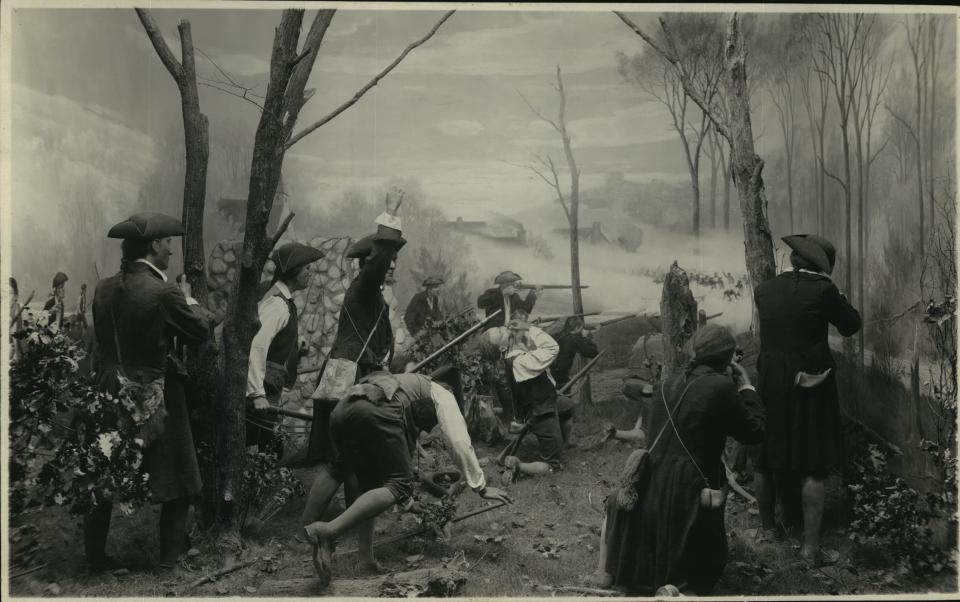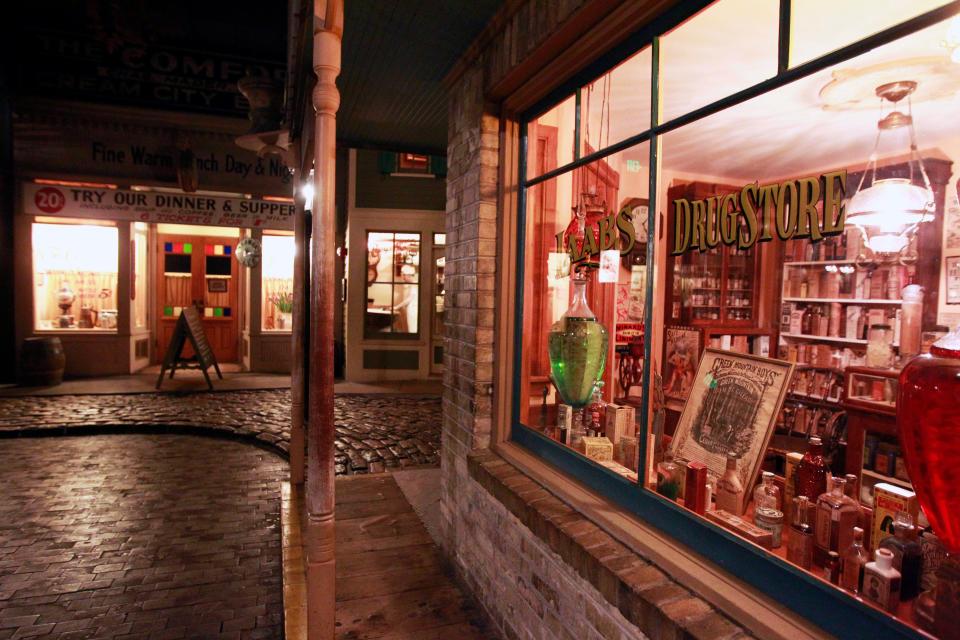'Thrown out the window': 60 years ago, Milwaukee also fretted about exhibits not moving to a 'new' Milwaukee Public Museum
When the Milwaukee Public Museum reaffirmed that not all of its permanent exhibits will make the move to its shiny new museum, the news fueled a wave of anxiety among those attached to the museum's old standbys, especially the Streets of Old Milwaukee exhibit.
Turns out some Milwaukeeans had the same concerns more than 60 years ago — when the now-old museum was new.
"It is almost sacrilegious to abandon the beauty housed in our fine building," Herbert M. Jierscheck, a critic of plans to replace the city's then-80-year-old museum with a new building, wrote to The Milwaukee Journal in a letter published May 23, 1958.
In the 1950s, plans for a new Milwaukee Public Museum stirred up fears that favorite exhibits would be left behind
Before the Milwaukee Public Museum building at 800 W. Wells St. opened in 1963, the museum, then owned by the City of Milwaukee, had been on several floors of Milwaukee Public Library's Central Library, 814 W. Wisconsin Ave. But by the 1950s, the museum was running out of room.
In 1956, voters approved a $7.5 million bond issue to fund construction of a new public museum. Jierscheck, president of the Milwaukee County Property Owners Association, argued that the existing building could be renovated for much less money — and without losing beloved exhibits.
As part of a committee studying the building plans for the Common Council, Jierscheck said in a 1957 meeting that he feared many of the museum's popular dioramas would be "thrown out the window" if a new building was built.
"I went on record to predict conservatively that if a new museum is built, it will have only 50% of the exhibits on display that are now in our present museum," he wrote The Journal in the 1958 letter.
Jierscheck was wrong: Most of the old museum's natural history dioramas arrived intact or in expanded and improved displays — including the bison hunt, which when it opened in the new space in 1966 reportedly was the largest open diorama in the world.
But Jierscheck was also a little bit right: Some major exhibits did not make the move to the new museum.
Which exhibits from the old Milwaukee Public Museum didn't survive?
At the old museum on Wisconsin Avenue, visitors were greeted by a series of historical dioramas. One of them, the log cabin of city founder Solomon Juneau, can still be seen at the Wells Street location. (The diorama is in an expanded and improved display on the museum's first floor, just before the Streets of Old Milwaukee.)
But four dioramas celebrating America's wars did not make the move.
By the 1960s, museum officials had determined the war exhibits, built in the years following World War I, no longer fit the institution's primary mission.

"The combat scenes did not fit into the scheme of the new museum," The Journal's Harry S. Pease wrote in a story about the exhibits' dismantling on July 10, 1970. "And anyhow, war has lost its glamour in recent decades."
One of those exhibits, "The Storming of Chapultepec," celebrated a complicated moment in history. The real-life battle, during the Mexican-American War of the 1840s, was one of the Marines' first big skirmishes; the clash helped contribute the lyric "From the halls of Montezuma" to "The Marines' Hymn."
But it also involved fighting a contingent from a Mexican military academy, most of them teenagers. Six of the young soldiers fought to the death and became national heroes in Mexico; a monument to "Los Niños Héroes" was installed in a park at the site in Mexico City in 1952.
Stephan de Borhegyi, the museum director at the time the new building opened, had done considerable research in Latin America. De Borhegyi pointed out that the battle "still was regarded as an outrage by our neighbors to the south," The Journal's Pease reported in 1970. "He ordered the exhibit closed."
Another historical diorama made the move from the old museum to the Wells Street building but didn't last long there.
The display depicted the surrender of Black Hawk, the Sauk leader who led Native Americans in a clash with U.S. forces in what became known as the Black Hawk War in Wisconsin in 1832. Although the exhibit had stood for decades in the old building, it was removed from the new building in the 1970s because of community and staff objections to the display's depiction of the Native American leader in handcuffs.
In other cases, exhibits in the old museum were repurposed in bigger displays in the new space. For example, the drugstore and barbershop, standalone exhibits at the old museum, were incorporated into the Streets of Old Milwaukee in the new building.

A smaller museum could mean more exhibits are left behind
One big difference between the old-new museum and the new-new museum could determine how many original exhibits survive the move this time around.
Part of the reason so many dioramas were able to make the transition 60 years ago was that the Wells Street space was bigger than the original museum's.
The then-new, 480,000-square-foot museum had 150,000 square feet of exhibition space, more than 25% more space than in the library museum. The museum being planned for Sixth and McKinley will be much smaller, 230,000 square feet with 80,000 square feet of exhibit space when it opens in 2026.
So, likely, some old exhibits won't fit.
Some popular attractions are already confirmed for the new space. The museum said its iconic T. Rex will find a home in its new Time Travel Gallery. And Oronde Wright, senior exhibition designer at Thinc Design, which is designing the new museum, confirmed that the rattlesnake button at the bison hunt diorama will make an appearance.
The museum plans to roll out information on the five permanent galleries in the new museum through May.
RELATED:As Milwaukee Public Museum prepares for new home, what current exhibits matter to you?
RELATED:Here are 14 'hidden treasures' to look for at the Milwaukee Public Museum
This article originally appeared on Milwaukee Journal Sentinel: Milwaukee Public Museum: Fretting about exhibits' fate is nothing new

